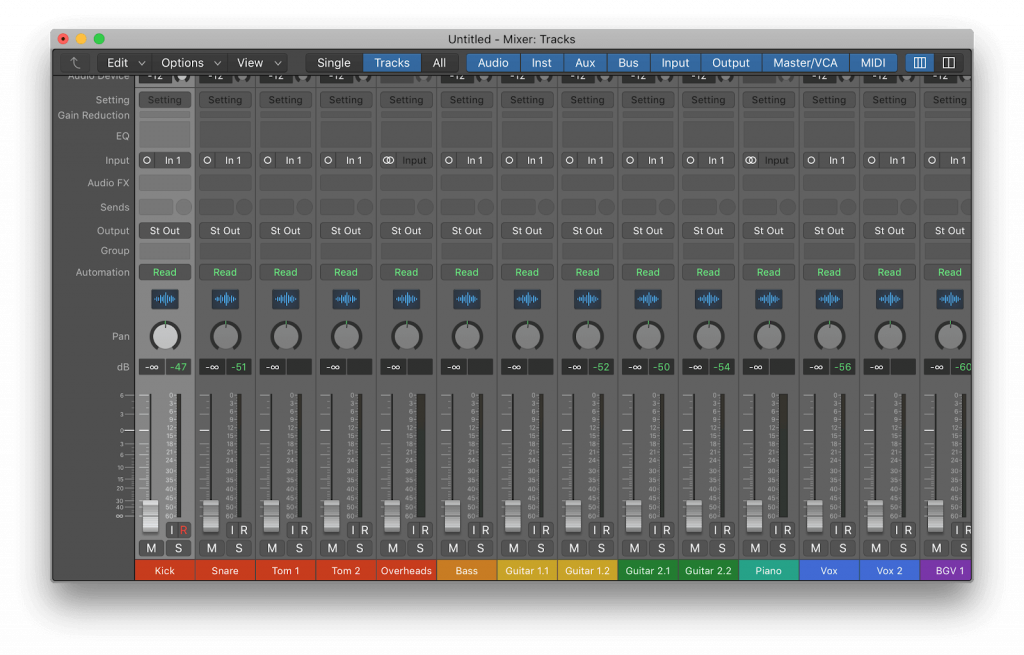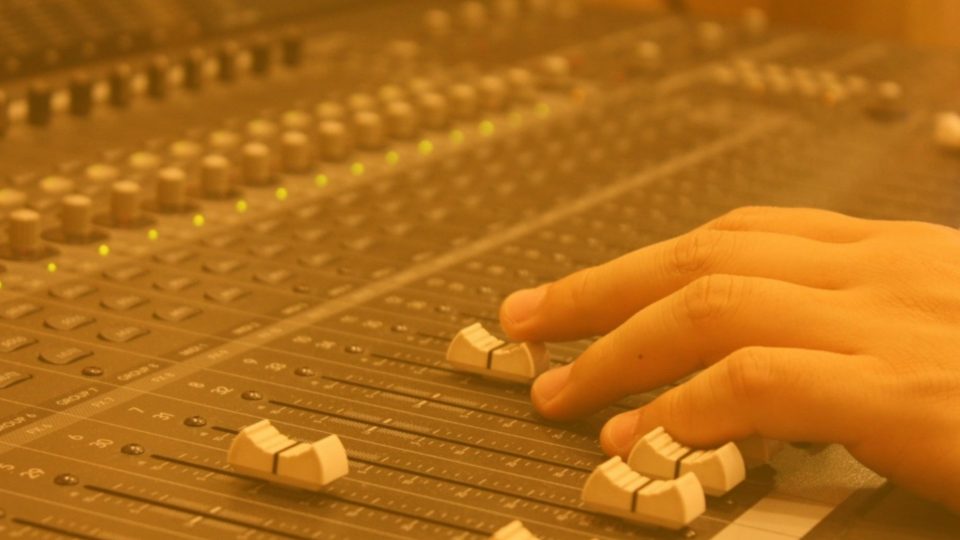What is the Static Mix Technique?
Knowing where to start on your mix can feel overwhelming. I, personally, have felt this struggle like a deadweight on my creative motivation.
But there is a process that I wish I knew about sooner, and that is the static mix technique. It can be tempting to spend more time with your EQ and other effects. But, with little experience in knowledge, this usually does more harm than good. Regardless of what effects you think you should be using more than others to clean your mix up… it’s probably unnecessary.
Gain staging and panning should be your priorities when creating a balanced mix, and so the static mix technique puts these tools above anything else. Creating a strong foundation for your house with brick gain staging and panning mortar will actually be more efficient and effective in regards to time-saving. With good levelling, some problems you run into with your typical mix may well just disappear. Poof!
An example that you’ve probably come across before would be masking or loud elements in your mix that aren’t the focus burying the focal elements that you want your listeners to focus on. In this scenario, you probably went for your EQ or compressor to bring the element forward.
You may well have used your EQ to boost the midrange of your vocal tracks. It may have seemed to work too. But I’m sure you also brought your dBFS ceiling a lot closer to home, didn’t you?
To avoid lowering the roof, as it were, addressing these issues with channel gain and panning would have done the trick and left your dBFS ceiling pretty much intact.
You could bring the gain of your drum tracks down and pan the overheads left and right. And/or with your synth and guitar you could pan the guitar to the left and the synth to the right and vice versa. Not hard left or right, just enough to make room in the centre for your central vocals, drums and bass. Not only does this keep your dBFS ceiling as far away as possible, but you also save your computer processor. Phew!
What is A Static Mix and Why is it Important?
So, a static mix is a draft mix made with only basic DAW mixer tools. These tools are your channel faders, aux, buses and sends, as well as panning controls.
We use a static mix to balance all of the levels inside our session by placing them in a general position before applying our beloved EQ, compressor, reverb and any other plugins.
By panning and adjusting the volume of your drums, synth and guitar as you record or paste notes and before any plugin processing enters the mix, you’ve done half of the work that you would have used these plugins for anyway. Thus keeping your mix neat, clean and easier to process in the session.
Having this strong foundation in place allows you to plan how you’ll build your house more effectively.
Why Start Static?
I know that you, as well as I, have gone into a project all guns blazing and full of ideas… only to leave the project as a folder in my “Finish These” folder… for a minimum of 6 months. I’m kidding, I actually mean 3 years.
It’s easy, and very tempting, to just follow your creative imagination and just lay down the material that’s pouring out of your creative mind. After all, you are a creative genius.
But then you start mixing the track later on and then there are a plethora of issues and why won’t this sound just fit and why isn’t my compressor saving the day and why’s my EQ making everything sound boxy?!
Ugh. It’s draining and then you never finish your music because you “just aren’t cut out for music”.
No, the issue is that you don’t have the right processes in place to stop silly mistakes from happening in the first place. Boy, do I wish someone sat my naive self down and blessed me with this hope.
By starting your track as a static mix right off the bat, gain staging, panning channels and creating buses as you go, you’re making it easier for yourself to identify focal points and even easier to add to the track to support said focal points.
It also makes EQ’ing and compression easier. You’ll no longer need heavy processing, which is great for the dynamics of your track. But the best part? It makes it easier to understand when to use automation. By setting the fader level and pan positions, you’ll realise how much it’ll take to make a sound fit. And that is where automation comes in.
How to Build a Static Mix
Even if you haven’t started with a static mix, converting your current mix into a static mix is simple and you can do it in three steps. But you need a fresh perspective on your mix.
Rather than relying on plugins, it’s time to rely on simple mixer techniques.

Step One: Determine What Your Loudest Elements Are
The chances are that your loudest channels are your kick, snare and vocal tracks. These are where you should start.
Set everything else to zero and set each of these three-volume faders to the same level of 0dBFS to determine how they interact with one another. With the right gain staging on all of your other tracks, you may well be able to leave these all playing the same level.
Based on how they work together, determine which should be louder than others. You may be able to leave them at the same level, but that will depend on how you’ve gain staged your mix.
That’s the loudest part of your mix covered.
Step Two: Plan and Pan
As you begin raising all of your other tracks one at a time, use panning and adjust the stereo position of these extra channels. These’ll probably include that guitar and synth we were talking about as they’re there to support the vocals, not dominate them.
Your vocal lead, kick, snare and bass tracks should all occupy the middle of your stereo image. Literally, you should be panning everything else left or right (or both with automation).
A wide sounding mix always contains some material at the far edges as well as throughout the stereo space.
Step Three: Balancing Your Levels
Now that all of your elements are working together from left to right and your focal points are on top of your mix, you’ll get an idea of just how loud everything should actually be with respect to what else is in your mix.
Use your ears and raise or attenuate each individual element so that it’s clear and no masking is occurring and no element is hiding another.
This stage may well take some long experimentation, but you will get there. I promise you.
If an element is too dominant where it shouldn’t be, attenuate its level or pan it further away. It’ll be easier to make some channels clearer than others, but you’ll have an idea of what to expect and do with your plugins when you introduce them after this stage.
The static mix technique is an amazing way to take your mixdown skills from good to great. So, isn’t it about time you practise with some samples of your own?
We at Mixxed work with a growing number of sample labels and contributors to provide you with an affordable sample subscription service that’s more accessible than any before.
You’ll have access to our growing catalogue of thousands of loops, one-shots and sound effects that you can browse, download and keep forever for less than $3 a month.
Sign up today to find your sound!
